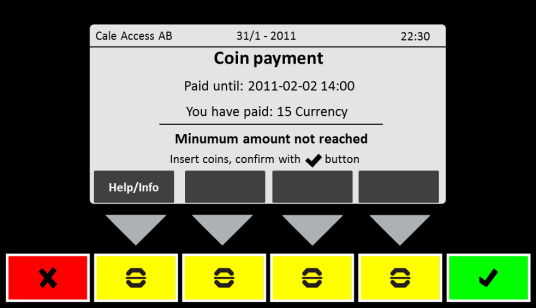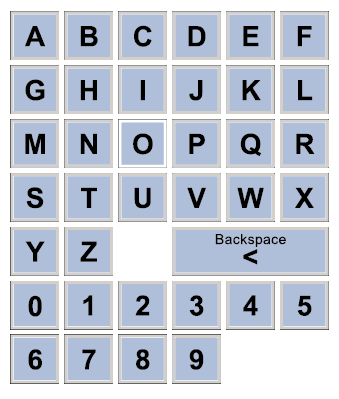CWT Compact Soft Buttons
The CWT Compact models up-to and including S3A With monochrome or colour display (No Touch) with or without keyboard has six fixed push buttons of the piezoelectric type – below the display window. The function of the buttons changes dynamically depending on the current phase of a purchase or information retrieval. The current function of a button is indicated by an adjacent caption or instructive text in the display.

Figure 30. CWT Compact function buttons, example
The six buttons below the display are normally set up to forward the clicks to the display panel that is currently presented. The function of each physical piezo button then depends on the defined click action of the button declaration in the current panel. This makes it possible to adapt the function of the buttons to each panel.
CWT Compact S3A Keyboard
The CWT Compact models up-to and including S3A with keyboard has an additional 48-key alpha-numeric piezoelectric keyboard.

Figure 31, CWT Compact with keyboard, example
Behind the visible keyboard there is a fixed grid of 48 piezoelectric switches, and the function of each switch can be defined. The function of an alpha-numeric key is fixed, which means that it can not be changed for each display panel in the user interface.
All buttons are mapped by declaring a KeyboardButton (STN) or PiezoKeyboardButton (TFT) control in the Keyboard element of a display form. Each physical button in the piezo keyboard has a unique number that is used as an id of the keyboard button. This id is used as a reference when the keyboard button is defined. Each keyboard key has a Click property and a KeyValue property that specify the behaviour of the button.
See Alpha-numeric keys for an example definition